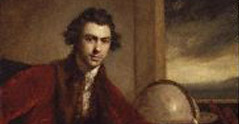|
CHINA THROUGH WESTERN EYES
Manuscript Records of Traders, Travellers, Missionaries and Diplomats, 1792-1942
Part 6: Correspondence and Papers of Sir Ernest Satow (1843-1929) relating to China from Public Record Office Class PRO 30/33
PUBLISHER'S NOTE
China Through Western Eyes makes available the original manuscripts of a wide variety of Western traders, travellers, missionaries and diplomats who visited China between the Macartney Embassy to China in 1792 and the onset of World War II some 150 years later.
Parts 1-3 offer the diaries, journals, letters, photographs and scrapbooks of a host of American and British figures from the holdings of the William R. Perkins Library at Duke University.
Parts 4-5 cover the manuscript diaries and papers from the China Records Project at Yale Divinity Library, mainly relating to missionaries active in China between 1871 and 1963.
This sixth part is entirely devoted to the papers of Sir Ernest Satow (1843-1929) relating to China from Public Record Office Class PRO 30/33. Satow’s diaries have been available to a scholarly readership for a long time but this is the first time that his correspondence and reports have been available.
Sir Ernest Satow was born in London in 1843. His formative years were spent at Mill Hill School, a puritanical establishment that strengthened his traditionalist values instilled by a strong Protestant upbringing. During his undergraduate studies at University College London (UCL), Satow became increasingly interested in the newly opened Orient. After his graduation in 1861, Satow’s strong desire to visit the East was realised when he gained one of three Foreign Office student-interpreterships to serve with either the Chinese or Japanese Consulates. Satow chose the latter and arrived in Japan in September 1862.
After successfully serving in Japan for over 30 years (beginning as Japanese Secretary and rising to Minister Plenipotentiary), Satow was transferred to Beijing (Peking) in October 1900 - following the Boxer Rebellion - where he replaced Sir Claude Maxwell Macdonald as Britain’s Minister.
In the late 19th century, China had become increasingly powerless and hostile to demands made by foreign countries for special economic rights and trade privileges. Her history of humiliating defeats in the Opium Wars (1839-1842, 1856-1860) and the First Sino-Japanese War (1894-1895) led to increasing tensions and suppressed resentment throughout the nation. Christianity was also having an intense impact on China, threatening the traditional Confucian thinking that had existed for centuries. In 1898, China experienced extensive flooding in many provinces. To the rural Chinese, the ensuing famine conditions heightened the belief that foreign Imperialism was even powerful enough to influence nature, the major foundation of their spiritual philosophy.
Banditry was commonplace, especially in the northern provinces, but the major force behind the revolt was led by the Boxers. Their origin is, in itself, a separate topic for discussion but it is commonly thought that the Boxers were associated with a secret society known as the ‘Fists of Righteousness and Harmony’, hence their name. The Boxers had already started a campaign of terror against Chinese missionaries and religious converts in the north-east provinces in the late 1890s. With unofficial support by the Qing Court, the revolt peaked between June and August, 1900, when rebels besieged European and US legations in Peking. The deaths and destruction of property that ensued caused the foreign powers to send relief troops to secure their interests and to quash the unrest. This uprising became known as the Boxer Rebellion.
Satow arrived in Peking during the aftermath of the uprising in October 1900. His background in understanding Eastern cultural, political, financial and commercial activities placed him as an ideal candidate to undertake diplomatic relations with China. Satow’s main task was to preserve good relations between the foreign powers, extract restitution from the Chinese government and maintain the peace. He instructed the Chinese government to pay a large indemnity over 40 years, made provision for commercial concessions and also for the stationing of foreign military troops permanently in Peking. Through lengthy negotiations and with the firm guiding hand of Satow, the landmark Boxer Protocol peace treaty between China and the foreign powers was signed on September 7, 1901.
The papers and correspondence included in this series reflect these events and give detailed information on them, including correspondence with Consular staff, who acted as Satow’s ‘eyes and ears’, at Chinese missions in Amoy, Canton, Changsku, Chefoo, Chêngtu, Chiananfu, Chingkiang, Foochow, Hankow, Ichang, Kinkiang, Nanking, Ningpo, Shanghai, Tientsin, Wuchow and Wuhu; with colleagues in Peking as well as with Major General Sir Alfred Gaselee (commanding British contingent, China Field Force), Major General F. Ventris (commanding in North China), the Supreme Court, the Permanent Court of Arbitration in the Hague and the Second Peace Conference.
Satow was an outstanding diplomat who had a firm and intelligent grasp of the events of the day and this is reflected throughout his correspondence and papers. They are a crucial source for understanding Britain’s opinion and attitude towards China in the late 19th and early 20th centuries and provide an excellent insight into the nature of the Orientalist mindset.
Sir Ernest Satow’s Papers relating to Japan are published in our companion project Japan Through Western Eyes Part 6.
<Back
|















